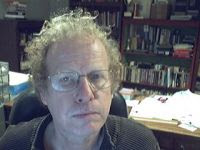2001 Champion of World Speaking Darren LaCroix gave a workshop in New Albany OH on April 23, 2011. Here are my notes from the event with my thoughts.
“Habits are like train tracks. They’re hard to get into place — but once you do, they’ll take you wherever you want to go.” Attributed to Patricia Fripp.
Be inspired by those who have achieved greatness, but don’t compare yourself to them. Instead, compare yourself to those at the same level or, better yet, to your own past performance.
Experts think differently from others, leading them to different habits, which is why they get different results.
There are two types of feedback:
1. What I thought and felt (which anyone can provide)
2. Coaching feedback requiring a specialist.
Your goal in developing a habit is to change your subconscious.
Many Toastmasters make the mistake of starting a new speech when they receive feedback when they should take what they have and make it better. LaCroix used the Toastmasters championship to pull out and polish segments of one larger keynote address. Professional speakers find new audiences, not new speeches.
99% of all coaching is about clarity. Is your message clear and consistent?
Winners of the world championship built a five minute speech up to seven minutes. Most of their competitors cut a nine minute speech to seven. A seven minute speech has enough time to get one idea across, and Craig Valentine believes you shoul;d be able to say it in no more than 10 words.
Get the attention of the audience in the first thirty seconds – a suspenseful CSI opening. The Toastmaster’s job is to deal with welcomes; yours is to get to the point.
Use dialog (even internal dialog) rather than narration.
Don’t be the hero of your own story –credit a guru you learned something from.
I’ve heard and used the idea of having a personal “I” centered story leading to a “you” centered message. LaCroix recommends starting with a “you” focused question so audience members get an idea of how the story pertains to them before getting into the story. He credits Craig Valentine, who calls this “tap and transport” (tap their consciousness and transport them into your story).
When used, the question should be directed at one audience member. Do not ask “how many …” which can only be answered with a number. If you want a number, still ask it one-on-one and raise a hand to suggest audience members do the same.
The audience judges the stability of your message based on your movement. While you want to use the stage effectively during the speech, start by standing perfectly still. It doesn’t matter what you say – it only matters what the audience sees when you say it. Patricia Fripp
Each character in a story needs to be seen and felt. Offer one visual characteristic and one emotional point, leaving the rest for the audience to fill in. This is much easier to do than creating a distinct voice for each character.
Describe a situation from its VAKS:
• Visual (what you’d see)
• Auditory (what you’d hear)
• Kinesthetic (what you’d feel)
• Smell
You can find out more about Darren and his resources at http://darrenlacroix.com/.
Saturday, April 23, 2011
Subscribe to:
Posts (Atom)
